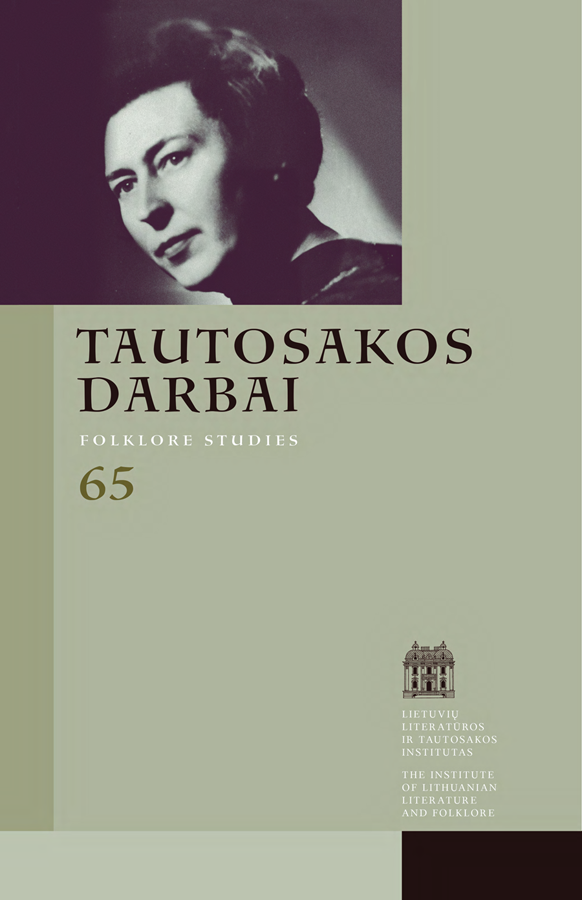Intimidating, Cruel and Violent Motives of the Traditional Lithuanian Lullabies
Abstract
Lithuanian folk lullabies, as well as lullabies in general, are commonly regarded as a folksong type intended to soothe babies and small children. However, the lullabies’ lyrics occasionally contain intimidating, cruel and violent motives that create a kind of semantic field which might cause anxiety and tension for the children rather than calming them down. The article focuses on precisely such lullabies. It consists of three parts analyzing different texts of the Lithuanian lullabies. In the first part, the author presents texts by which the children are threatened, intimidated, or which mention some dangerous mythical creatures and animals. In the second part, lullabies containing elaborate cruel and violent motives are discussed. In the third part, lullabies conveying a depreciatory attitude towards the child are presented. They reveal the indifference of the adults to the child. In this part, lullabies in which the child is symbolically brought to death are discussed as well.
As revealed by the study, the purpose of the intimidating lullabies is scaring and didactics, while the frightening motives convey the traditional Lithuanian mythical worldview. The occurring violent motives reflect already existing cultural plots. Violent motives in the lullabies are transferred to the animal world using a form of humor. The lullabies can also perform a protective function: either by calling the child “useless” or “about to die”, or by driving away the creatures that could harm it.
Downloads
Most read articles by the same author(s)
- Vita Džekčioriūtė, Certain Aspects of Mythical Meaning of Frog in the Traditional Lithuanian Worldview , Tautosakos darbai: Vol. 48 (2014)
- Vita Džekčioriūtė, A Polish Sourcebook on the Living Dead , Tautosakos darbai: Vol. 66 (2023): Tautosakos darbai
- Vita Džekčioriūtė, Aušra Žičkienė, Jūratė Šlekonytė, Gražina Kadžytė, Jurgita Ūsaitytė, Lina Būgienė, Daiva Vyčinienė, Chronicle , Tautosakos darbai: Vol. 48 (2014)
- Radvilė Racėnaitė, Vita Džekčioriūtė, Foreword , Tautosakos darbai: Vol. 66 (2023): Tautosakos darbai
- Radvilė Racėnaitė, Vita Džekčioriūtė, Preface , Tautosakos darbai: Vol. 67 (2024): Tautosakos darbai




